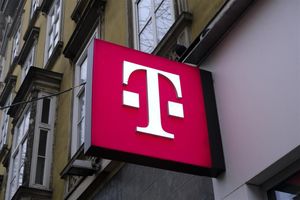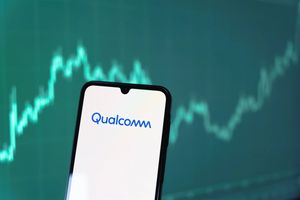
November 8, 2025 – In a significant move set to redefine trust in the often-turbulent decentralized finance (DeFi) landscape, XRP Tundra has emerged as a frontrunner in transparency and accountability. Through a meticulous commitment to verified multi-layered audits, a publicly accessible Know Your Customer (KYC) process for its team, and a robustly secure presale model, the project is not just participating in DeFi; it's actively setting a new benchmark for credibility. This comprehensive approach directly addresses the growing investor demand for verifiable security and accountability, offering a compelling case study for how innovation and institutional-grade trust can coexist within the blockchain ecosystem.
XRP Tundra's initiatives are having immediate implications for the broader DeFi market, signaling a shift away from purely speculative ventures towards projects underpinned by tangible proof of security and identity. By providing verifiable evidence of its operational integrity, XRP Tundra aims to foster increased investor confidence and attract a segment of the market that prioritizes defensible and stable DeFi opportunities. This strategic positioning also aligns with evolving regulatory expectations, potentially paving the way for greater institutional participation in the DeFi space as the market matures.
Unpacking XRP Tundra's Pillars of Trust
XRP Tundra's commitment to transparency is built upon several foundational pillars, each designed to instill confidence and mitigate risks for participants. The project has undergone an extensive and rigorous auditing process, distinguishing itself with what it describes as "triple-audit validation" and "six independent verifications" even before its public trading commenced. These comprehensive security assessments were conducted by highly reputable firms within the blockchain security space: SolidProof, Cyberscope, and FreshCoins.
Specifically, SolidProof awarded XRP Tundra's Solana contract an impressive 95% security rating, unequivocally confirming the renunciation of ownership and the permanent disabling of minting functions. Their audit identified zero critical or medium-risk vulnerabilities, no blacklist capabilities, a capped contract fee mechanism, and a non-upgradable design, all crucial elements ensuring the immutability and safety of the smart contracts. Cyberscope further corroborated these findings with an 82% overall score and a 95% security rating, verifying that all core authorities, such as minting, freezing, and updating, were irrevocably revoked. FreshCoins, by including XRP Tundra in its verified registry, added another layer of validation to the project's overall security architecture and operational protocols. These audits collectively cover critical aspects from contract code integrity and liquidity protection to tokenomics and potential security risks across both its Solana and XRP Ledger implementations, providing a robust, verifiable proof of security.
Beyond technical audits, XRP Tundra has embraced public Know Your Customer (KYC) verification for its core team, a rare and commendable step in the pseudonymous world of DeFi. The project underwent full identity screening with Vital Block, a recognized third-party verification provider. Crucially, the documentation confirming the identity screening for all core team members is publicly accessible on GitHub. This public disclosure allows the development team to maintain operational privacy while ensuring a verified chain of accountability through trusted intermediaries. This proactive approach creates a clear link between the founding entities and core engineers to their corporate identifiers and the wallet signers noted in audit records, significantly differentiating XRP Tundra from projects that rely on internal or unverifiable "trust seals."
The project's presale model is equally engineered for maximum transparency and security. All presale transactions, token distributions, and system updates are fully traceable and viewable through public explorers on both the Solana (SOL 0.00%) and XRP Ledger (XRP 0.00%) blockchains. Each phase of the presale had its parameters published in advance, with all token allocations visible via verifiable transaction logs. XRP Tundra operates with a dual-token architecture: TUNDRA-S on Solana for utility and yield, and TUNDRA-X on the XRP Ledger for governance and reserves, designed to ensure verifiable accountability across two distinct ledgers. The presale showcased transparent pricing, bonuses, and token allocations viewable in real-time through smart contracts, with token issuance, liquidity allocation, and contract addresses published in full before listing. Utilizing Meteora's Dynamic Automated Market Maker (DAMM v2) for its liquidity pools, XRP Tundra dynamically adjusts trading fees to maintain token stability and prevent market manipulation, particularly during early liquidity phases. With over $2 million raised through its presale and more than $32,000 in Arctic Spinner rewards distributed, all these activities are verifiable on-chain, underscoring a commitment to verifiable progress over mere speculation.
Market Implications: Who Wins and Who Loses?
XRP Tundra's aggressive pursuit of transparency is likely to create distinct winners and losers within the financial landscape. Winners primarily include discerning investors and institutions seeking more secure and compliant entry points into the DeFi space. Projects that emulate XRP Tundra's model of verifiable audits and public KYC will likely gain a competitive edge, attracting capital from a growing pool of investors wary of rug pulls and opaque operations. The XRP Ledger ecosystem (XRP 0.00%) also stands to gain significantly, as XRP Tundra provides a much-needed on-chain, transparent, and verifiable DeFi yield generation solution for XRP holders, addressing a historical lack of native staking mechanisms for XRP. This expands the utility and appeal of XRP within the broader DeFi ecosystem. Furthermore, third-party audit firms like SolidProof, Cyberscope, and FreshCoins, along with KYC providers like Vital Block, are positioned to see increased demand for their services as more projects seek to adopt similar transparency standards.
Conversely, losers in this evolving landscape could include DeFi projects that continue to operate with a high degree of anonymity and lack robust security audits. These projects may find it increasingly difficult to attract investor capital as the market shifts towards verifiable trust. Projects relying solely on hype or unverified claims of security will face greater scrutiny and skepticism. Traditional financial institutions (TradFi) that have been hesitant to engage with DeFi due to perceived risks and regulatory uncertainties might also find themselves at a disadvantage if they fail to adapt to the new standards of transparency being set by projects like XRP Tundra. While XRP Tundra's model could eventually bridge the gap between TradFi and DeFi, those who resist embracing these verifiable trust mechanisms could be left behind as the DeFi sector matures and professionalizes.
The competitive landscape within DeFi will intensify, favoring projects that can demonstrate tangible security and accountability. This could lead to a consolidation within the market, where well-vetted and transparent projects thrive, while those lacking these credentials struggle for legitimacy and liquidity.
Wider Significance and Industry Trends
XRP Tundra's initiatives are not isolated events but rather fit squarely into several broader, powerful industry trends shaping the future of decentralized finance. Foremost among these is the accelerating demand for greater regulatory clarity and compliance within the blockchain space. As global regulators, including the U.S. Securities and Exchange Commission (SEC), intensify their scrutiny of digital assets, projects that proactively embrace transparency and accountability, like XRP Tundra, are positioning themselves favorably. Their multi-audited, public KYC approach aligns with the spirit of consumer protection and market integrity that regulators are increasingly emphasizing. This could serve as a template for how DeFi projects can achieve institutional-grade trust without sacrificing decentralization.
The potential ripple effects on competitors and partners are substantial. For other DeFi projects, XRP Tundra's model sets a new, higher bar for entry. Projects that once thrived on anonymity or minimal due diligence will now face pressure to adopt similar transparency measures to remain competitive and attract capital. This could lead to a "flight to quality" within the DeFi market, where capital concentrates in projects demonstrating verifiable security and responsible team conduct. Partners within the XRP Ledger and Solana ecosystems, such as exchanges, wallet providers, and other dApps, may find increased confidence in integrating with projects that adhere to such rigorous standards, fostering a more secure and interconnected ecosystem.
Historically, the blockchain space has seen cycles of exuberance followed by periods of increased scrutiny and demand for legitimacy. The ICO boom of 2017 and subsequent regulatory crackdowns serve as a precedent, highlighting the market's eventual gravitation towards projects with substance. XRP Tundra's approach mirrors a maturation process, akin to how traditional financial markets evolved from unregulated wild west scenarios to highly regulated, transparent environments. By embracing verifiable trust through code and documentation, XRP Tundra is contributing to the professionalization of DeFi, moving it beyond purely speculative narratives towards a foundation of auditable reality. This shift could unlock significant capital from institutional players who have, until now, largely remained on the sidelines due to perceived risks and lack of regulatory certainty.
What Comes Next: Navigating the Future of Trust
Looking ahead, XRP Tundra's pioneering efforts in transparency present both short-term and long-term possibilities for its own trajectory and the wider DeFi ecosystem. In the short term, the project is likely to continue attracting a growing segment of risk-averse investors and potentially institutional capital seeking well-vetted opportunities. Its dual-chain architecture, leveraging both Solana and the XRP Ledger, effectively distributes operational risk and offers a buffer against single-chain congestion or manipulation, contributing to overall market stability. This strategic choice could lead to increased adoption and integration across both powerful blockchain networks, expanding its user base and utility.
In the long term, XRP Tundra could serve as a blueprint for sustainable DeFi development. The project's framework demonstrates how utility, compliance, and verifiable infrastructure can coexist, offering a model for future projects aiming for longevity and broad market acceptance. Potential strategic pivots or adaptations required might include continuous innovation in security protocols, expanding its suite of DeFi offerings while maintaining its transparency ethos, and actively engaging with evolving regulatory frameworks to ensure ongoing compliance. Market opportunities will likely emerge in areas requiring high trust, such as institutional DeFi lending, stablecoin issuance, and real-world asset tokenization, where XRP Tundra's verifiable security could be a significant differentiator. Challenges could involve maintaining its leading edge in transparency as competitors emerge, and navigating the complex, often fragmented, global regulatory landscape. Potential scenarios include XRP Tundra becoming a leading example of a "regulated DeFi" project, or its model inspiring a widespread industry shift towards similar transparency standards, fostering a more mature and resilient decentralized financial system.
Comprehensive Wrap-Up: A New Era for DeFi
XRP Tundra's proactive stance on transparency, underpinned by verified audits, public KYC, and a secure presale model, marks a pivotal moment in the evolution of decentralized finance. The key takeaway is clear: verifiable trust is becoming an indispensable asset in the DeFi space. By subjecting its smart contracts to rigorous, multi-party audits from firms like SolidProof, Cyberscope, and FreshCoins, and by publicly verifying the identities of its core team through Vital Block, XRP Tundra has established a new gold standard for accountability. Its presale model, with its dual-token architecture (TUNDRA-S and TUNDRA-X), transparent pricing, and on-chain verifiability, further reinforces this commitment, demonstrating that robust security and investor protection can be integrated from a project's inception.
Moving forward, the market is poised to increasingly reward projects that prioritize such demonstrable integrity. Investors are no longer content with promises; they demand proof. XRP Tundra's approach signals a maturation of the DeFi sector, shifting focus from purely speculative ventures to those built on solid, auditable foundations. This trend will likely foster greater investor confidence, potentially attracting a larger influx of institutional capital that has historically been deterred by DeFi's perceived risks and lack of transparency.
Investors should closely watch for several indicators in the coming months. Firstly, observe how other DeFi projects react and adapt to this elevated standard of transparency. Will more projects adopt public KYC and multi-audits? Secondly, monitor the regulatory landscape; projects like XRP Tundra, with their proactive compliance measures, might influence how regulators shape future policies, potentially creating clearer pathways for legitimate DeFi innovation. Finally, track XRP Tundra's continued development and ecosystem growth, particularly its impact on the utility and adoption within both the Solana and XRP Ledger communities. Its success could prove to be a powerful testament to the fact that a more transparent, secure, and accountable DeFi is not just possible, but essential for long-term sustainability and widespread adoption.
This content is intended for informational purposes only and is not financial advice




